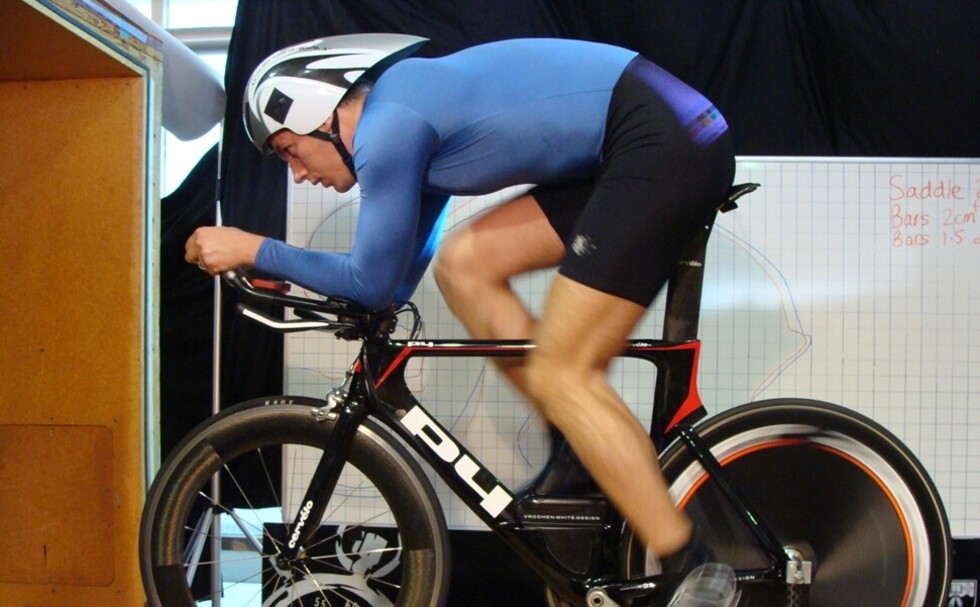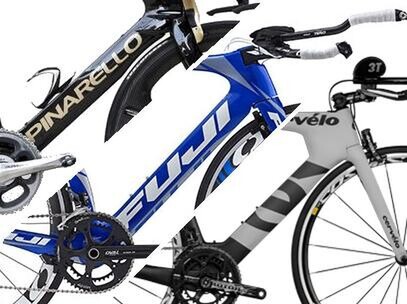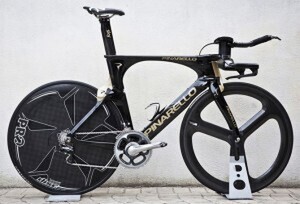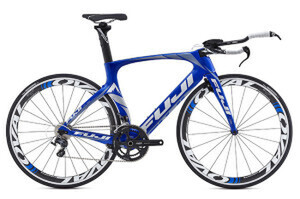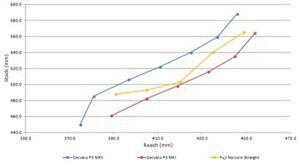There have been some interesting new bikes announced recently, as usual I have an opinion about such things so have jotted down a few observations.
In ascending order of interest….
Pinarello Bolide
Pinarello have released a successor to the Graal which is much more aesthetically pleasing. And they seem to have paid attention to the rest of the industry in adopting BB86, hidden brakes (using the 30yr old Shimano AX principles), offering lower bottle placement and managing airflow. Of particular note is the loss of the shark fin pattern imprinted in the downtube. It actually looks like a fast bike.
The PR release linked above of course refers back to their history with TT bikes. Nothing they’ve done since is as cool as the Indurain/Riis era bikes.
As far as I can determine the translation of Bolide is Meteor. Which seems like a really good name until you look at the English definition which is “a meteor that explodes in the upper atmosphere” – a particularly inauspicious name given Sir Wiggins chucking it to the side the first time he raced with it (puncture).
At this point only the 56cm is UCI approved which means they must have rushed that mould into production to be tested prior to the Giro d’Italia. The Graal actually has a good size range (but weird steering geometry) so the Bolide may follow that pattern.
Ultimately it’s hard to get excited by a new Pinarello TT bike when the current Graal costs almost as much for a frameset as two Cervelo P5-Three bikes.
Image from http://www.ciclipinarello.com/
Fuji Norcom Straight
Those of you who signed up for the pre-release info about Fujis new TT bike will have, like me, suffered several weeks of teasers that served to annoy more than build anticipation. The bike turned out better than the advance images suggested.
The bike was released on the site www.fitcomesfirst.com – a name which suggests a clever fit system. And the PR talks about fitting a huge range of riders. After a little digging it turns out that part of the method for achieving this range is to flip the stem. Personally I don’t consider a +17° stem a good fitting solution for a ‘superbike’ – it’s not aero and its ugly.
Notwithstanding the argument I had about their fit range with the product manager on the slowtwitch forum I actually like this bike. Mostly because of the starting pricepoint.
If you have a long/low position it will fit easily with the stock bars. If you require a high stack/short reach position you will need to factor in changing the bars to the cost, or be prepared to flip the stem up (I will not be doing that for you!).
You can see the channel at the front of the headtube that the brake cable runs throughThe channel at the front of the Headtube for the brake cable to run through is quite clever and I like the overall invisibility of the cables. The aero design features look sensible. The adjustable vertical dropouts are a really cool feature that I’ve been waiting for a brand to execute well. And the overall aesthetic and ease of adjustment is a vast improvement on the D6.
Unfortunately their aero data only compares to their own D6 and excludes bars so it’s not particularly informative as there isn’t a lot of good data on how the D6 fares in the market.
As alluded to above – the entry level model is USD2300 – which means that this is one of the cheapest contemporary design bikes around and I am keen to have it as an option for my clients.
Images from www.fitcomesfirst.com
Cervelo P3
Cervelo have always been really good with naming their bikes – if the frame changed they gave it a new name. Unfortunately they’ve abandoned this policy with the new P3 (NP3) as they wished to hold on to the reputation that has built up around that moniker.
Understandable really, given that the P3 has been the most successful TT/Tri bike in history (wins and sales). But still inconvenient.
When I first got the P5 in I thought that Cervelo had put themselves in a little bit of a hard place. The ‘simply faster’ premise had led to a superbike with a limited number of painful and/or proprietary features. Which would make it easy to trickle the frame shaping down to a lower model for a minimal loss of aero performance but potentially a lot lower cost.
They did exactly as expected – copied the front end across from the P5 and only changed the rear end in allowing the rear brake back in the traditional spot above the wheel and an alteration to the seat tube/top tube gusset. Frame construction further simplified by having the gear cables run all the way to the BB rather than stops at the headtube.
At the moment the only build available is Dura Ace with Magura Hydraulic brakes and USA pricing is 10% lower than a P5-Three. Hopefully an ultegra spec will bring all the aero and ride quality goodness to a lower pricepoint.
Forget MySky – this is my happy placePhil White from Cervelo has commented that the NP3 is the fastest bike under US$6000 and only two of the over US$6000 bikes are faster – one of which is of course the P5. So now we have the fun guessing game to work out which other superbike can beat this.
One of the most interesting elements is that the size 48 has 700C wheels – the same size (which fits exactly the same) P5 has 650C wheels. There is now a size 45 NP3 that has 650C wheels and is the smallest TT bike Cervelo have ever made. This is great news for both the very petite (who will benefit from the 45) and those who are on the cusp of 700C/650C – easier to get on to a 700C Cervelo now.
Images from www.cervelo.com
Sizing Comparison
This chart maps the sizing progression of the NP3 vs the Original P3 and Fuji Norcom Straight. The NP3 is exactly the same sizing as the P5 for Sizes 48-61 (not that anyone has seen a 48 or 61 P5 yet…).
Obviously the Fuji is bouncing around between the old long/low fit philosophy of the original P3 and the more market friendly higher stack of the NP3. It does have a good range of sizes so will suit a good portion of the market.
Still no sizing info for the Bolide.
Conclusion
Of these three bikes I think the Fuji will be the most relevant to the majority of the market at 40% (for the 2.5 model) of the cost of an NP3 and probably 15% of the cost of a Bolide. If the speed features live up to the hype (we’ll have to wait for a magazine to do a tunnel test so I can analyse their data properly) then it will sit very nicely on the speed/$ scale.
The NP3 is the most interesting – benefiting from the amazing developments of the P5 but even more user friendly. I do think that lower spec models will be required for it to find a place in the market – at the moment I expect it to mostly steal customers from the P5 rather than other brands.
But all that tech and the legacy of the name will be very attractive once it’s just a bit cheaper.
And the Bolide will be a rarity – not really relevant to anyone but the well heeled Italophile.
Overall these are three bikes with impressive design features aimed at different market segments. Now it’s up to you to decide which matches your needs* the best…
*yes, a TT bike is a need!
